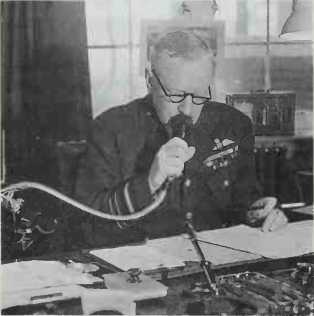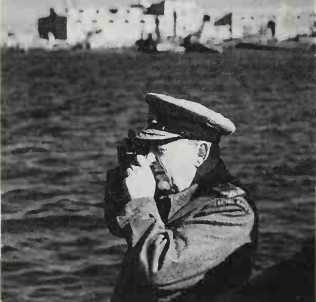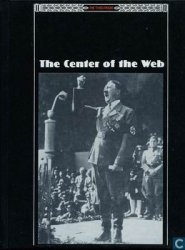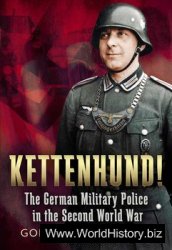Handley Page 0/100 and 0/400 (Br. WWI). Heavy bomber; crew 3-4. Prototype flew December 17 1915; much corrective experimentation needed before operational use; first mission night March 16—17 1917. Improved design, 0/400, ordered August 1917; first deliveries March 1918; thereafter increasingly used by raf and Independent Force until Armistice. Production: 0/100, 46; 0/400, 491; plus at least 107 built in US. Two 375hp Rolls-Royce Eagle, 275hp Sunbeam Maori or 350hp Liberty 12-N engines; max. speed 97.5mph (157kph); 2,0001b (900kg) bombs, five 0.303in machine guns.
Handley Page V/1500 (Br, post-WWI). Heavy bomber; crew 9. Prototype flew May 22 1918. Was rap’s first four-engine bomber; intended to bomb Berlin from bases in England. Of the 243 originally ordered at least 44 were completed, but the type was too late to see operational use. One bombed Kabul May 24 1919. Four 375hp Rolls-Royce Eagle, 500hp Galloway Atlantic, or 450hp Napier Lion engines; max. speed 99mph (158kph); 7,5001b (3,402kg) bombs, five 0.303in machine guns.
Hannover CL Il/III/IIIa (German, late and post-WWI). Two-seat escort fighter/infantry support. Prototype flew 1917; first production aircraft (CL II) entered service late 1917. Modification and development led to CL III (160hp Mercedes) and CL Ilia of 1918. Compact, sturdy and manoeuvrable, Hannover two-seaters were widely and successfully used; a few operated by Polish air force 191920. Production: 439 CL IIs, 80 CL Ills, 537 CL Illas. One 180hp Argus As III engine; max. speed 103mph (165kph); two 7.92mm machine guns.
Hanoi. American bombardment of North Vietnam encroached upon Hanoi, the capital, in 1965. US planes hit transportation and fuel facilities on the outskirts and gradually increased the scope of attack to include industrial targets. Most government offices, factories and up to three-quarters of the city’s 710,000 people (in
1970) were dispersed to the countryside. In reprisal for the Easter offensive of 1972, President Nixon intensified the bombing, and in December, to break the negotiating deadlock, he sent B-52s to strike targets inside as well as near Hanoi. Two full loads of bombs missed their targets, flattening residential neighbourhoods and killing 2,196 people. Aside from that, the city suffered mild damage compared with the destruction of cities in other modern wars. WST.
Hanriot HD-1 (French, WWI). Single-seat fighter. Prototype flew summer 1916. Quantity production for Belgium and Italy; also produced in Italy from November
1916. Used by at least 16 Italian squadriglie with considerable success; a few, plus some HD-2s (seaplane version), with French naval units. Production: reported 125 delivered to Belgium, and that 831 were completed in Italy to war’s end, 70 more thereafter. One 110/ 120/130hp Le Rhone engine; max. speed 115mph (184kph); one 7.7mm machine gun.
Hansa-Brandenburg C I (Austro-Hungarian, WWI). Two-seat reconnaissance bomber; German design built in Austria-Hungary. Prototype flew 1915; extensively used January 1916 to war’s end. Production, in 19 series with at least seven types of engine 1,258. With 160hp Austro-Daimler engine max. speed 87mph (139kph). Two machine guns, 2201b (100kg) bombs.
Hansa-Brandenburg D I (Austro-Hungarian, WWI). Single-seat fighter; German design, built in two series Austria-Hungary, one in Germany. Prototype flew early 1916; production deliveries that autumn. Although fast had unpleasant flying qualities. One 150/ 160/185hp Austro-Daimler engine; max. speed 116mph (187kph); one 7.9mm machine gun.
Hansa-Brandenburg W12 (German, WWI). Two-seat fighter seaplane. Prototype tested January
1917. Production deliveries from August 1917; effectively used against Allied ships and aircraft in Channel and North Sea. Production 146. One 150hp Benz Bz. III or 160hp Mercedes D. III engine; max. speed lOOmph (160kph); two or three 7.7mm machine guns.
Hanson, First Lt Robert M (1920
44). US. Third-ranked Marine Corps fighter pilot with 25 victories. He shot down 20 Japanese aircraft in January 1944 alone.
Harding, Field Marshal Lord
(1896-1989). Br. Governor and c-in-c, Cyprus (1955-57) when he handed over to Sir Hugh Foot (later Lord Caradon) who was responsible for bringing about a negotiated settlement resulting in the creation of the Republic of Cyprus, in which Britain retained Sovereign rights over two tracts containing military cantonments, a strategic airfield, and certain electronic monitoring sites. See
Also CYPRUS (1955-60).
Harkins, Gen Paul D (1904-84). US. Appointed the first Commander of the US Military Assistance Command, Vietnam (comusmacv) in February 1962. Opposed the coup against President Ngo Dinh Diem, setting himself against Ambassador Lodge. Harkins’ perennial optimism exasperated officials who had a better understanding of the Saigon government’s weaknesses, and he was replaced by Gen William Westmoreland as MACv commander in June 1964.
Harmon, Maj Gen Ernest Nason (1894-1979). US. Aggressive commander of armoured formations. Led US 2nd Armored Division in North Africa, 1942-43, and, after commanding 1st Armored Division in Italy, 1943-44, again led 2nd Armored, and finally XXII Corps, in Northwest Europe, 1944-45.
Harmon, Lt Gen Millard F (18881945). US. The overall commander of the usAAF in the Pacific Ocean Area, 1944—45.
Harpoon missile. An American medium-range jet-propelled antiship missile which can be launched from surface, sub-surface or air platforms. It is fired down a pre-set bearing using a simple but accurate autopilot. It switches on its homing radar at a point chosen considering the characteristics of the target. Range is over 54 miles (90km). Harpoon is operated by 16 countries in addition to the USA, which has used it with success against both Libya and Iran.
Harrier/Sea Harrier, British Aerospace (Br). Single-seat close-support''tactical reconnaissance, shipboard fighter. World’s first operational fixed-wing vtol aircraft; conspicuous success Falk-lands 1982. Prototype (Hawker P.1127) flew (in hover) October 21 1960. (free) November 19 1960. First production Harrier GR Mark
I flew December 28 1967; further Marks developed. First Sea Harriers to RN June 18 1979. usmc uses extensively; version built USA. Production 77 GR Mk I, 37 GR Mk 3, 113 AV-8As for usmc and Spain; 57 Sea Harriers, continuing. One 21,5001b (9,752kg) s. t. Bristol-Siddeley Pegasus 103/ 104 engine; max. speed 720mph (l,159kph; two 30mm cannon, two Sidewinder missiles, 5,0001b (2,250kg) external ordnance.
Harriet, Mount. The heavily mined southern end of the Argentinian defences around Port Stanley during the Falklands War of 1982. It was stormed on the night of June
II by 42 Commando, who breached the minefield, then captured the position from the rear, taking more than 300 prisoners.

Harris: advocate of area bombing
Harris, Marshal of the RAF Sir Arthur Travers (1892-1984). Br. Aoc-in-c, RAF Bomber Command 1942-45. Harris, who had served in the rfc in World War I, was selected to command 5 Group, Bomber Command on the outbreak of World War II. Later he was Deputy Chief of the Air Staff and Head of the raf delegation in Washington. In February 1942 he was given the prime command in the RAF, that of Bomber Command.
The CAS (Portal) told Harris to attack large German towns at
Night; other policies were tactically impossible. Harris was also confronted with a lack of confidence in Bomber Command which threatened its existence. He took drastic steps to implement his orders and to restore confidence. At 1205 hours on May 30 1942 he gave the order “Thousand Plan Cologne” and that night 1,046 bombers took off in the largest scale of air operations ever undertaken. The centre of Cologne was devastated, the Germans were given warning of recompense to come and the British changed their sights from survival to victory. To do it, Harris, whose front line strength was barely more than 400 bombers, committed all his reserves and every available crew in his operational training units; seldom can a commander have staked more on his judgement.
Harris’s style, for such a commander, was unusual; he seldom emerged from his headquarters and was unknown, even by sight, to the vast majority of his crews, yet his remarkable command over them was sustained throughout all the dark nights which, in the end, cost nearly 50,000 of their lives. Harris stuck resolutely to the policy of massive area bombing, in pursuit of which he waged the battles of the Ruhr, Hamburg and Berlin, and some, including Portal, thought that he did so for too long and after other policies were with, in his grasp. Eventually he became identified with an outmoded policy and his real achievements were obscured. ANF.
Hartlepool, bombardment of (December 16 1914). In an attempt to destroy isolated British squadrons, the High Seas Fleet was kept as a covering force while battlecruisers were sent to bombard Hartlepool and Scarborough on the English east coast to provoke a reaction. Three ships bombarded Hartlepool, causing civilian casualties but little real damage. The local shore battery caused damage to all three before being silenced.. The prevailing poor visibility and communications difficulties caused both sides to miss each other in the subsequent manoeuvrings.
Hartmann, Lt Col Erich (b. l922). Ger. Most successful fighter pilot of World War II, with 352 “kills” (345 Russian, including 11 in one day; 7 American). He flew 1,425 combat missions in Messerschmitt Me 109s, surviving c800 dogfights and 18 crash-landings and parachute escapes. Hartmann surrendered to US forces in May 1945, but was handed over to the Russians and served 10 years’ imprisonment. He subsequently joined the West German Luftwaffe.
Haruna see kongo.
Harwich Force. British scouting force of light cruisers and destroyers based at Harwich, World War I, under the efficient and inspiring command of Adm Tyr-whitt. One of its destroyers fired the first shot of the naval war; fought at Heligoland Bight and many later actions.

Harwood; his squadron sank Graf Spee
Harwood, Adm Sir Henry (18881950). Br. Commanding the British Squadron on the South American Station, December 1939, Harwood was confronted by pocket battleship Admiral Graf Spee, whose 11 in guns, with a range of 30,000yd (27,000m), outranged his 6in cruisers, Ajax and the New Zealand Achilles, and 8in cruiser Exeter. Nevertheless, in a brilliant manoeuvre on December 13 1939, Harwood brought the German ship to action and forced her to divide her fire. She was severely damaged and put in to Montevideo for repairs. On coming out, her captain, Langsdorff, scuttled the ship and committed suicide. Although Exeter was crippled and Ajax and Achilles were both hit, Harwood won a brilliant victory. Langsdorff believed that Harwood had a much more powerful force than was the case. ANF.




 World History
World History









